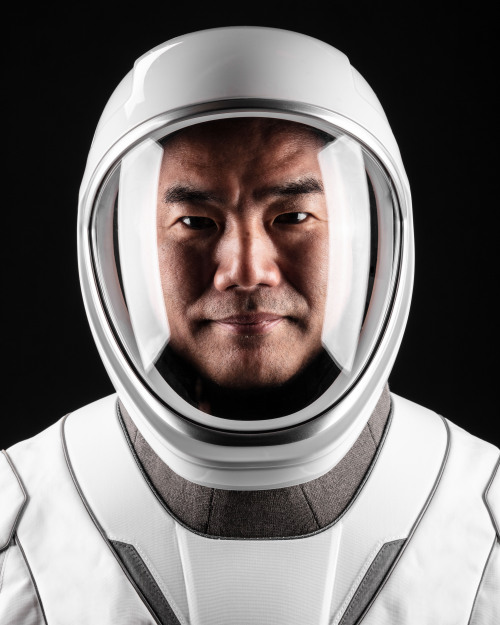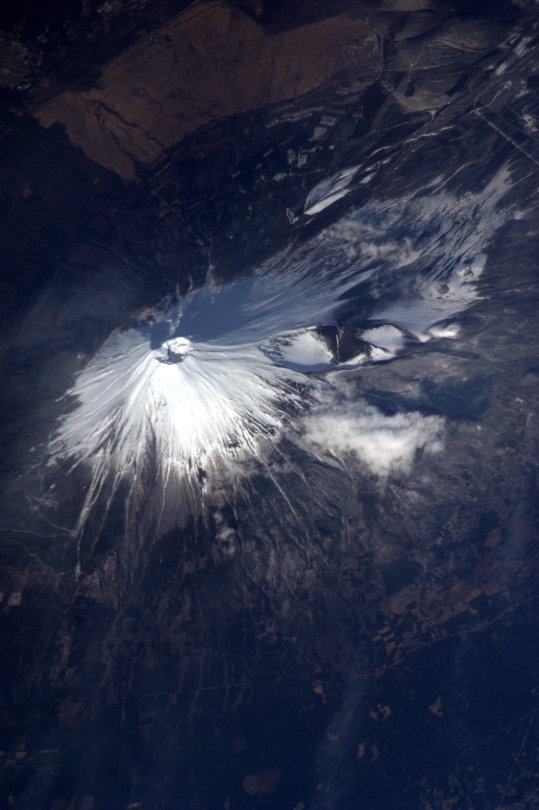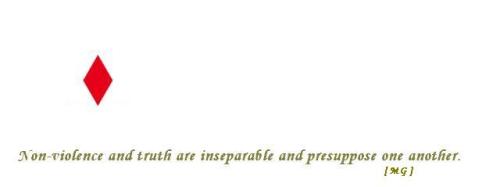Thehkr - 無標題

More Posts from Thehkr and Others


Roman's primary structure hangs from cables as it moves into the big clean room at NASA's Goddard Space Flight Center.
What Makes the Clean Room So Clean?
When you picture NASA’s most important creations, you probably think of a satellite, telescope, or maybe a rover. But what about the room they’re made in? Believe it or not, the room itself where these instruments are put together—a clean room—is pretty special.
A clean room is a space that protects technology from contamination. This is especially important when sending very sensitive items into space that even small particles could interfere with.
There are two main categories of contamination that we have to keep away from our instruments. The first is particulate contamination, like dust. The second is molecular contamination, which is more like oil or grease. Both types affect a telescope’s image quality, as well as the time it takes to capture imagery. Having too many particles on our instruments is like looking through a dirty window. A clean room makes for clean science!

Two technicians clean the floor of Goddard’s big clean room.
Our Goddard Space Flight Center in Greenbelt, Maryland has the largest clean room of its kind in the world. It’s as tall as an eight-story building and as wide as two basketball courts.
Goddard’s clean room has fewer than 3,000 micron-size particles per cubic meter of air. If you lined up all those tiny particles, they’d be no longer than a sesame seed. If those particles were the size of 16-inch (0.4-meter) inflatable beach balls, we’d find only 3,000 spread throughout the whole body of Mount Everest!

A clean room technician observes a sample under a microscope.
The clean room keeps out particles larger than five microns across, just seven percent of the width of an average human hair. It does this via special filters that remove around 99.97% of particles 0.3 microns and larger from incoming air. Six fans the size of school buses spin to keep air flowing and pressurize the room. Since the pressure inside is higher, the clean air keeps unclean air out when doors open.

A technician analyzes a sample under ultraviolet light.
In addition, anyone who enters must wear a “bunny suit” to keep their body particles away from the machinery. A bunny suit covers most of the person inside. Sometimes scientists have trouble recognizing each other while in the suits, but they do get to know each other’s mannerisms very well.

This illustration depicts the anatomy of a bunny suit, which covers clean room technicians from head to toe to protect sensitive technology.
The bunny suit is only the beginning: before putting it on, team members undergo a preparation routine involving a hairnet and an air shower. Fun fact – you’re not allowed to wear products like perfume, lotion, or deodorant. Even odors can transfer easily!

Six of Goddard’s clean room technicians (left to right: Daniel DaCosta, Jill Bender, Anne Martino, Leon Bailey, Frank D’Annunzio, and Josh Thomas).
It takes a lot of specialists to run Goddard’s clean room. There are 10 people on the Contamination Control Technician Team, 30 people on the Clean Room Engineering Team to cover all Goddard missions, and another 10 people on the Facilities Team to monitor the clean room itself. They check on its temperature, humidity, and particle counts.

A technician rinses critical hardware with isopropyl alcohol and separates the particulate and isopropyl alcohol to leave the particles on a membrane for microscopic analysis.
Besides the standard mopping and vacuuming, the team uses tools such as isopropyl alcohol, acetone, wipes, swabs, white light, and ultraviolet light. Plus, they have a particle monitor that uses a laser to measure air particle count and size.
The team keeping the clean room spotless plays an integral role in the success of NASA’s missions. So, the next time you have to clean your bedroom, consider yourself lucky that the stakes aren’t so high!
Make sure to follow us on Tumblr for your regular dose of space!
Our Space Launch System Rocket’s “Green Run” Engine Testing By the Numbers
We continue to make progress toward the first launch of our Space Launch System (SLS) rocket for the Artemis I mission around the Moon. Engineers at NASA’s Stennis Space Center near Bay St. Louis, Mississippi are preparing for the last two tests of the eight-part SLS core stage Green Run test series.
The test campaign is one of the final milestones before our SLS rocket launches America’s Orion spacecraft to the Moon with the Artemis program. The SLS Green Run test campaign is a series of eight different tests designed to bring the entire rocket stage to life for the first time.
As our engineers and technicians prepare for the wet dress rehearsal and the SLS Green Run hot fire, here are some numbers to keep in mind:

212 Feet
The SLS rocket’s core stage is the largest rocket stage we have ever produced. From top to bottom of its four RS-25 engines, the rocket stage measures 212 feet.

35 Stories
For each of the Green Run tests, the SLS core stage is installed in the historic B-2 Test Stand at Stennis. The test stand was updated to accommodate the SLS rocket stage and is 35 stories tall – or almost 350 feet!

4 RS-25 Engines
All four RS-25 engines will operate simultaneously during the final Green Run Hot Fire. Fueled by the two propellant tanks, the cluster of engines will gimbal, or pivot, and fire for up to eight minutes just as if it were an actual Artemis launch to the Moon.

18 Miles
Our brawny SLS core stage is outfitted with three flight computers and special avionics systems that act as the “brains” of the rocket. It has 18 miles of cabling and more than 500 sensors and systems to help feed fuel and direct the four RS-25 engines.

773,000 Gallons
The stage has two huge propellant tanks that collectively hold 733,000 gallons of super-cooled liquid hydrogen and liquid oxygen. The stage weighs more than 2.3 million pounds when its fully fueled.

114 Tanker Trucks
It’ll take 114 trucks – 54 trucks carrying liquid hydrogen and 60 trucks carrying liquid oxygen – to provide fuel to the SLS core stage.

6 Propellant Barges
A series of barges will deliver the propellant from the trucks to the rocket stage installed in the test stand. Altogether, six propellant barges will send fuel through a special feed system and lines. The propellant initially will be used to chill the feed system and lines to the correct cryogenic temperature. The propellant then will flow from the barges to the B-2 Test Stand and on into the stage’s tanks.

100 Terabytes
All eight of the Green Run tests and check outs will produce more than 100 terabytes of collected data that engineers will use to certify the core stage design and help verify the stage is ready for launch.
For comparison, just one terabyte is the equivalent to 500 hours of movies, 200,000 five-minute songs, or 310,000 pictures!

32,500 holes
The B-2 Test Stand has a flame deflector that will direct the fire produced from the rocket’s engines away from the stage. Nearly 33,000 tiny, handmade holes dot the flame deflector. Why? All those minuscule holes play a huge role by directing constant streams of pressurized water to cool the hot engine exhaust.

One Epic First
When NASA conducts the SLS Green Run Hot Fire test at Stennis, it’ll be the first time that the SLS core stage operates just as it would on the launch pad. This test is just a preview of what’s to come for Artemis I!
The Space Launch System is the only rocket that can send NASA astronauts aboard NASA’s Orion spacecraft and supplies to the Moon in a single mission. The SLS core stage is a key part of the rocket that will send the first woman and the next man to the Moon through NASA’s Artemis program.

Make sure to follow us on Tumblr for your regular dose of space: http://nasa.tumblr.com
Build a Rover, Race a Rover!

Have you ever wanted to drive a rover across the surface of the Moon?
This weekend, students from around the world will get their chance to live out the experience on Earth! At the Human Exploration Rover Challenge, managed by NASA’s Marshall Space Flight Center in Huntsville, Alabama, high schoolers and college students operate human-powered rovers that they designed and built as they traverse a simulated world, making decisions and facing obstacles that replicate what the next generation of explorers will face in space.

Though the teams that build the rover can be a few people or a few dozen, in the end, two students (one male, one female) will end up navigating their rover through a custom-built course at the U.S. Space and Rocket Center. Each duo will push their rover to the limit, climbing up hills, bumping over rocky and gravelly grounds, and completing mission objectives (like retrieving soil samples and planting their team flag) for extra points – all in less than seven minutes.

2019 will mark the 25th year of Rover Challenge, which started life as the Great Moonbuggy Race on July 16, 1994. Six teams braved the rain and terrain (without a time limit) in the Rocket City that first year – and in the end, the University of New Hampshire emerged victorious, powering through the moon craters, boulder fields and other obstacles in eighteen minutes and fifty-five seconds.

When it came time to present that year’s design awards, though, the honors went to the University of Puerto Rico at Humacao, who have since become the only school to compete in every Great Moonbuggy Race and Rover Challenge hosted by NASA Marshall. The second-place finishers in 1994, the hometown University of Alabama in Huntsville, are the only other school to compete in both the first race and the 25th anniversary race in 2019.

Since that first expedition, the competition has only grown: the race was officially renamed the Human Exploration Rover Challenge for 2014, requiring teams to build even more of their rover from the wheels up, and last year, new challenges and tasks were added to better reflect the experience of completing a NASA mission on another planet. This year, almost 100 teams will be competing in Rover Challenge, hailing from 24 states, Washington, D.C., Puerto Rico, and countries from Bolivia to Bangladesh.

Rover Challenge honors the legacy of the NASA Lunar Roving Vehicle, which made its first excursion on the moon in 1971, driven by astronauts David Scott and James Irwin on Apollo 15. Given the competition’s space race inspiration, it’s only appropriate that the 25th year of Rover Challenge is happening in 2019, the 50th anniversary of Neil Armstrong and Buzz Aldrin’s historic Apollo 11 moon landing.

Interested in learning more about Rover Challenge? Get the details on the NASA Rover Challenge site – then join us at the U.S. Space and Rocket Center (entrance is free) or watch live on the Rover Challenge Facebook Page starting at 7 AM CT, this Friday, April 12 and Saturday, April 13. Happy roving!
Make sure to follow us on Tumblr for your regular dose of space: http://nasa.tumblr.com
NASA’s View of COVID-19
#COVID19 led to changes in human activities around the globe. We can see some of these changes from space. Some bodies of water have run clearer, emissions of pollutants have temporarily declined, and transportation and shipment of goods have decreased.

Along with our partner agencies – ESA and JAXA – we’re making satellite data available on the COVID-19 Earth Observation Dashboard, where you can explore some of the changes we can see from space.

But it’s not just what we can see. When the pandemic began, NASA engineers sprang into action to build ventilators, oxygen hoods and more to help save lives.

Make sure to follow us on Tumblr for your regular dose of space: http://nasa.tumblr.com
The ranks of America’s Astronaut Corps grew by 11 today!
After completing more than two years of basic training, our graduating class of astronauts is eligible for spaceflight. Assignments include the International Space Station, Artemis missions to the Moon, and ultimately, missions to Mars.
The class includes 11 astronauts, selected in 2017 from a record-setting pool of more than 18,000 applicants. This was more than double the previous record of 8,000 applicants set in 1978.
Meet the graduates:
Kayla Barron

“If you don’t love what you’re doing, you’re not going to be good at it. I think it’s a combination of finding things that you really love that will also be really challenging and will force you to grow along the way.”
This Washington native graduated from the U.S. Naval Academy with a bachelor’s degree in systems engineering. As a Gates Cambridge Scholar, which offers students an opportunity to pursue graduate study in the field of their choice at the University of Cambridge. Barron earned a master’s degree in nuclear engineering.
As a Submarine Warfare Officer, Barron was part of the first class of women commissioned into the submarine community, completing three strategic deterrent patrols aboard the USS Maine.
Zena Cardman

“Every STEM opportunity that I have ever gone down is because of some mentor who inspired me or some student who was ahead of me in school who inspired me.”
Zena Cardman is a native of Virginia and completed a bachelor’s degree in biology and master’s degree in marine sciences at The University of North Carolina, Chapel Hill. Her research has focused on microorganisms in subsurface environments, ranging from caves to deep sea sediments.
An intrepid explorer, Cardman’s field experience includes multiple Antarctic expeditions, work aboard research vessels as both scientist and crew, and NASA analog missions in British Columbia, Idaho, and Hawaii.
Raja Chari

“I grew up with the mentality that education is truly a gift not to be taken for granted.”
This Iowa native graduated from the U.S. Air Force Academy in 1999 with bachelor’s degrees in astronautical engineering and engineering science. He continued on to earn a master’s degree in aeronautics and astronautics from Massachusetts Institute of Technology (MIT) and graduated from the U.S. Naval Test Pilot School.
Chari served as the Commander of the 461st Flight Test Squadron and the Director of the F-35 Integrated Test Force. He has accumulated more than 2,000 hours of flight time in the F-35, F-15, F-16 and F-18 including F-15E combat missions in Operation Iraqi Freedom.
Matthew Dominick

“I get to work with incredible people that want to solve problems and are passionate about it. I really want to contribute to the world and this is how I want to do it.”
This Colorado native earned a bachelor’s degree in electrical engineering from the University of San Diego and a master’s degree in systems engineering from the Naval Postgraduate School. He also graduated from U.S. Naval Test Pilot School.
Dominick served on the USS Ronald Reagan as department head for Strike Fighter Squadron 115. He has more than 1,600 hours of flight time in 28 aircraft, 400 carrier-arrested landings and 61 combat missions.
Bob Hines

“As you get older, other things become important to you, like being a part of something that’s bigger than yourself. This human endeavor of exploration is something that’s really exciting.”
Bob Hines is a Pennsylvania native and earned a bachelor’s degree in aerospace engineering from Boston University. He is a graduate of the U.S. Air Force Test Pilot School, where he earned a master’s degree in flight test engineering. He continued on to earn a master’s degree in aerospace engineering from the University of Alabama.
Hines served in the U.S. Air Force and Air Force Reserves for 18 years. He also served as a research pilot at our Johnson Space Center. He has accumulated more than 3,500 hours of flight time in 41 different types of aircraft and has flown 76 combat missions in support of contingency operations around the world.
Warren Hoburg

“It was back in high school that I realized that I was really interested in engineering. I always liked taking things apart and understanding how things work and then I also really enjoy solving problems.”
Nicknamed “Woody”, this Pennsylvania native earned a bachelor’s degree in aeronautics and astronautics from MIT and a doctorate in electrical engineering and computer science from the University of California, Berkeley.
Hoburg was leading a research group at MIT at the time of his selection and is a two-time recipient of the AIAA Aeronautics and Astronautics Teaching Award in recognition of outstanding teaching.
Dr. Jonny Kim

“I fundamentally believed in the NASA mission of advancing our space frontier, all while developing innovation and new technologies that would benefit all of humankind.”
This California native trained and operated as a Navy SEAL, completing more than 100 combat operations and earning a Silver Star and Bronze Star with Combat “V”. Afterward, he went on to complete a degree in mathematics at the University of San Diego and a doctorate of medicine at Harvard Medical School.
Kim was a resident physician in emergency medicine with Partners Healthcare at Massachusetts General Hospital.
Jasmin Moghbeli

“Surround yourself with good people that have the characteristics that you want to grow in yourself. I think if you surround yourself with people like that you kind of bring each other up to a higher and higher level as you go.”
Jasmin Moghbeli, a U.S. Marine Corps major, considers Baldwin, New York, her hometown. She earned a bachelor’s degree in aerospace engineering with information technology at MIT, followed by a master’s degree in aerospace engineering from the Naval Postgraduate School.
She is a distinguished graduate of the U.S. Naval Test Pilot School and has accumulated more than 1,600 hours of flight time and 150 combat missions.
Loral O’Hara

“I’m one of those people who have wanted to be an astronaut since I was a little kid, and I think that came from an early obsession with flying – birds, airplanes, rockets.”
This Houston native earned a bachelor’s degree in aerospace engineering at the University of Kansas and a Master of Science degree in aeronautics and astronautics from Purdue University. As a student, she participated in multiple NASA internship programs, including the Reduced Gravity Student Flight Opportunities Program, the NASA Academy at Goddard Space Flight Center, and the internship program at the Jet Propulsion Laboratory.
O’Hara was a research engineer at Woods Hole Oceanographic Institution, where she worked on the engineering, test and operations of deep-ocean research submersibles and robots. She is also a private pilot and certified EMT and wilderness first responder.
Dr. Frank Rubio

“I just figured it was time to take the plunge and try it. And so, I did and beyond all dreams, it came true.”
Dr. Francisco “Frank” Rubio, a U.S. Army lieutenant colonel, is originally from Miami. He earned a bachelor’s degree in international relations from the U.S. Military Academy and earned a doctorate of medicine from the Uniformed Services University of the Health Sciences.
Rubio served as a UH-60 Blackhawk helicopter pilot and flew more than 1,100 hours, including more than 600 hours of combat and imminent danger time during deployments to Bosnia, Afghanistan, and Iraq. He is also a board certified family physician and flight surgeon.
Jessica Watkins

“I’ve always been interested in exploring space. What’s out there and how can we as humans reach those outer stars and how can we learn more information about who we are through that process.”
This Colorado native earned a bachelor’s degree in geological and environmental sciences at Stanford University, and a doctorate in geology from the University of California, Los Angeles. Watkins has worked at Ames Research Center and the Jet Propulsion Laboratory.
Watkins was a postdoctoral fellow at the California Institute of Technology, where she collaborated on the Mars Curiosity rover, participating in daily planning of rover activities and investigating the geologic history of the Red Planet.
Learn more about the new space heroes right here: https://www.nasa.gov/newastronauts
Make sure to follow us on Tumblr for your regular dose of space: http://nasa.tumblr.com.



秋山莉奈

NASA Spotlight: Astronaut Soichi Noguchi
Soichi Noguchi was selected as an astronaut with the Japan Aerospace Exploration Agency in 1996. A native of Yokohama, Kanagawa, he is currently a mission specialist for NASA’s SpaceX Crew-1 launch taking flight to the International Space Station on Nov. 14. Soichi will be the first international crewmember on Crew Dragon and the first international partner astronaut to fly aboard three types of orbital spacecraft – the U.S. space shuttle, the Russian Soyuz, and now the SpaceX Crew Dragon! Talk about impressive. He received a B.S. in Aeronautical Engineering in 1989, master’s degree in Aeronautical Engineering in 1991, Doctor of Philosophy in Advanced Interdisciplinary Studies in 2020, all from the University of Tokyo.
Soichi took time from preparing for his historic mission to answer questions about his life and career:
You recently earned a doctorate in philosophy. What made you do it?
After my second flight, I started this research about your sensory system in zero gravity. I used a my own personal video, which I took during my last two flights at the International Space Station. I had a lot of interesting discussions amongst young professionals and students at the University of Tokyo about the research. It was a fun experience – but I would not do it again!
Space is a risky business. Why do it?
Space IS definitely a risky business. But the reward is higher than the risk so that’s why we take it.
Do you have a message for boys and girls in Japan who are interested in science and engineering?
Three words: Space. Is. Waiting.

Aside from mission objectives and tasks, what’s a personal goal for this mission?
We have a lot of interesting missions to do, but my personal goal is to return home with lots of fun stories.

What was it like to get the phone call to become an astronaut?
It was 25 years ago, but I still remember the voice vividly. I got a call from Dr. Mamoru Mohri, the very first JAXA astronaut, and he said “Welcome to the Astronaut Corps.” When I got the call to be part of the Crew-1 mission, I was a lot less nervous than when I was assigned to my first mission, but the excitement remains the same.
Can you describe your crew mate Mike Hopkins in one sentence?
He is a natural leader that takes care of the team really well, and he’s fun to play around with.

Star Trek or Star Wars?
Star Wars… just because!

Can you share your favorite photo or video that you took in space?
My favorite photo is Mount Fuji because I see the mountain almost every day when I was a child. It’s definitely breathtaking to see Mount Fuji from space.

What personal items did you decide to pack for launch and why?
I have lots of family photos, and I would put it inside my sleep station. Definitely one of the most challenging things about spaceflight is not experiencing zero gravity, not the rocket, but time away from family.
How would you describe spacewalking outside the space station?
It’s an excursion. The view of the Earth is just breathtaking because you are just one glass away from the vacuum of space. There’s nothing between you and Earth.

What are you most excited about for the future of human space exploration?
I would say I’m most excited for interplanetary travel to become more common so that the school kids can go to Mars on their field trip.
What would you say to someone looking to follow in your footsteps?
Don’t worry, be happy!
How has spaceflight evolved since your first launch and stay aboard the International Space Station in 2005?
This is definitely an exciting moment. We’re starting to see more players in the game. SpaceX is the frontrunner, but soon we’ll see Boeing, Sierra Nevada and Axiom. So the International Space Station will soon have more players involved, and it will be a lot more fun!
Thank you for your time, Soichi, and good luck on your historic mission! Get to know a bit more about Soichi and his NASA astronaut crew mates Victor Glover, Michael Hopkins, and Shannon Walker in the video above.
Watch LIVE launch coverage beginning at 3:30 p.m. EST on Nov. 14 HERE.
Make sure to follow us on Tumblr for your regular dose of space: http://nasa.tumblr.com

Take time to think, it is the source of power. Take time to read, it is the foundation of wisdom.
-
 phantomhemi liked this · 3 years ago
phantomhemi liked this · 3 years ago -
 sul6an2009 liked this · 5 years ago
sul6an2009 liked this · 5 years ago -
 adsum1 liked this · 5 years ago
adsum1 liked this · 5 years ago -
 ece2017emir liked this · 5 years ago
ece2017emir liked this · 5 years ago -
 iwtgl liked this · 5 years ago
iwtgl liked this · 5 years ago -
 ronbixler liked this · 5 years ago
ronbixler liked this · 5 years ago -
 78royal liked this · 6 years ago
78royal liked this · 6 years ago -
 maodante666 liked this · 6 years ago
maodante666 liked this · 6 years ago -
 chieffoxcollection liked this · 6 years ago
chieffoxcollection liked this · 6 years ago -
 wazzupdoode liked this · 6 years ago
wazzupdoode liked this · 6 years ago -
 n61a10v12 liked this · 6 years ago
n61a10v12 liked this · 6 years ago -
 andy9003025 liked this · 6 years ago
andy9003025 liked this · 6 years ago -
 tstren liked this · 6 years ago
tstren liked this · 6 years ago -
 counterslave2 liked this · 6 years ago
counterslave2 liked this · 6 years ago -
 i-night-porter liked this · 6 years ago
i-night-porter liked this · 6 years ago -
 noodle254-blog liked this · 6 years ago
noodle254-blog liked this · 6 years ago -
 jstaley1 liked this · 6 years ago
jstaley1 liked this · 6 years ago -
 letsplay2d-y liked this · 6 years ago
letsplay2d-y liked this · 6 years ago -
 jcoopers liked this · 6 years ago
jcoopers liked this · 6 years ago -
 tybbob liked this · 6 years ago
tybbob liked this · 6 years ago -
 vsuresh317 liked this · 6 years ago
vsuresh317 liked this · 6 years ago -
 n2mustangs liked this · 6 years ago
n2mustangs liked this · 6 years ago -
 giorgioxo liked this · 6 years ago
giorgioxo liked this · 6 years ago -
 anthonyalbisu liked this · 6 years ago
anthonyalbisu liked this · 6 years ago -
 thehkr liked this · 6 years ago
thehkr liked this · 6 years ago -
 thehkr reblogged this · 6 years ago
thehkr reblogged this · 6 years ago -
 dangerousbearpizzaalmond liked this · 6 years ago
dangerousbearpizzaalmond liked this · 6 years ago